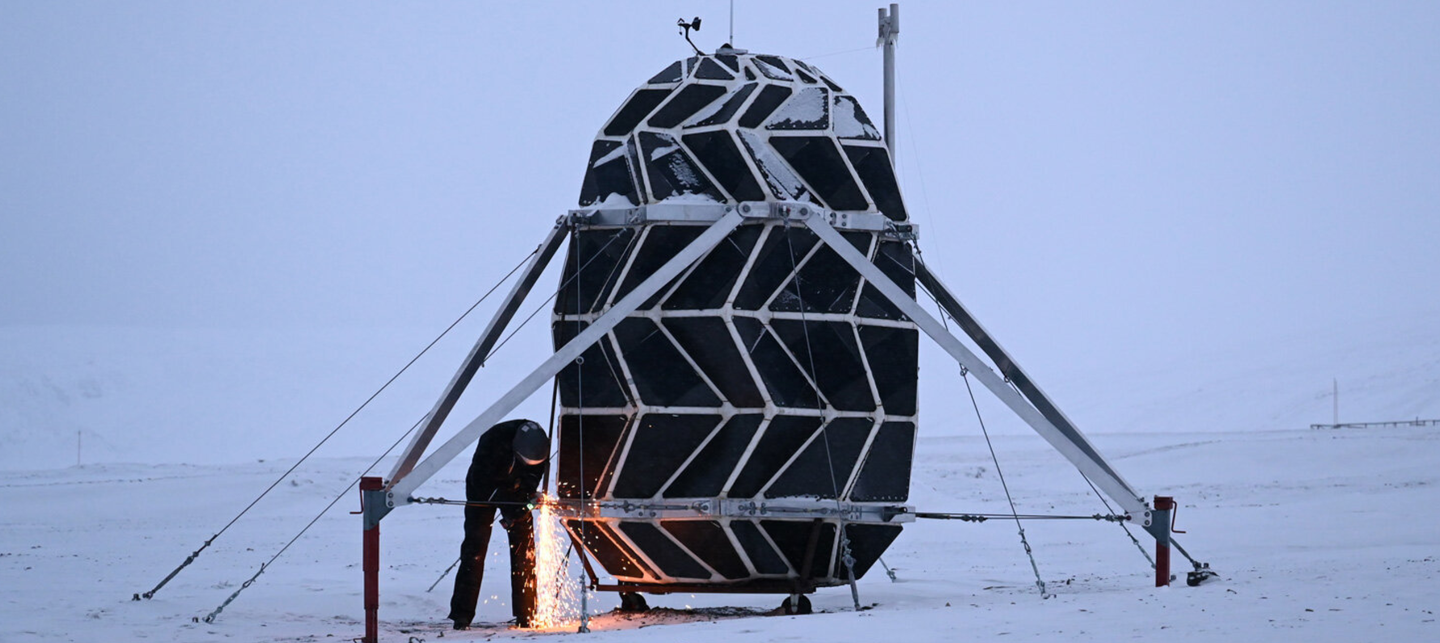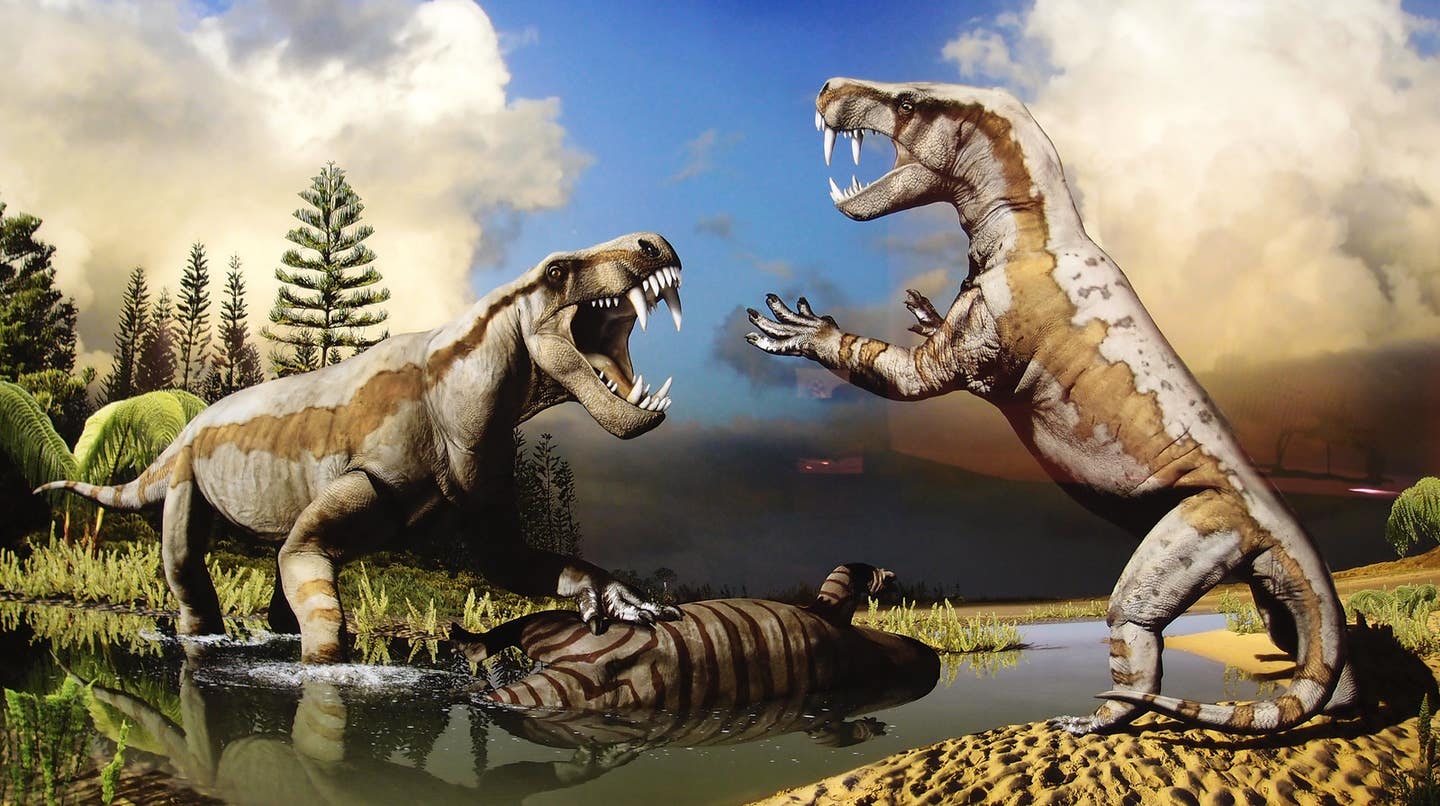Innovative habitat enables astronauts to safely live on the Moon
The Moon’s surface experiences drastic temperature variations. During the day, temperatures soar to 130 degrees Celsius.

SAGA tests LUNARK moon habitat in Northern Greenland’s extreme climate conditions. (CREDIT: SAGA space architects)
The Moon's surface experiences drastic temperature variations. During the day, temperatures soar to 130 degrees Celsius, while at night they plummet to nearly minus 160 degrees Celsius. With no atmosphere to shield it, the Moon is bombarded by cosmic radiation. Additionally, there's the pervasive fine moon dust that infiltrates everything, much like volcanic ash.
Despite these harsh conditions, global space agencies are undeterred in their quest to establish habitable bases on the Moon. This ambition is shared by the architectural firm SAGA Space Architects. Last year, architects Karl-Johan Sørensen and Sebastian Aristotelis Frederiksen, in collaboration with DTU Space, tested their innovative habitat near a disused titanium mine in North Greenland.
Their goal was to study the impact of extreme, moon-like environments on their mental and physical health. This approach differs from typical space survival projects, which mainly focus on technical necessities.
Sebastian explains, “Where all other space missions focus on making electronics, power, water, and oxygen supply work, we have tried to create an environment where many people will be able to thrive in space over a longer period of time.”
“If you really want a permanent civilization outside of Earth, it’s not just about meeting people’s basic needs such as food, water, and oxygen. It’s also about creating joie de vivre, psychological well-being, and mental surplus,” he adds.
Sebastian and Karl-Johan’s fascination with building livable environments in space began during their studies at the Royal Danish Academy of Fine Arts School of Architecture. In 2018, they founded SAGA Space Architects in Copenhagen and won the international ‘Dandelion Shelter’ competition.
Their design for a Mars shelter, inspired by dandelion seeds, included a surface that harvested static electricity from Martian dust storms. They later spent two months at the International Space University summer school, drawing inspiration from presentations by space agencies from the United States, Japan, and Israel. In 2020, they set out to build and test their lunar LUNARK habitat in Greenland.
Before embarking on their mission, they sought expertise in outer space conditions and Greenland’s extreme environment. They needed guidance on developing a scalable moon habitat and understanding Greenland's harsh climate, wildlife, and logistical challenges.
They connected with Per Lundahl Thomsen, Chief Consultant at DTU Space, who brought experience from significant projects like the Atmosphere-Space Interactions Monitor and the Ørsted satellite. Per and other DTU Space researchers, who study Arctic climate change, provided essential advice on organization, risk analysis, and obtaining necessary permits for the mission.
Related Stories
Per recalls, “When Sebastian called and said SAGA Space Architects were going to build a habitat in space, I thought: is that really a good idea? It was a wild idea, almost a crazy challenge, but it’s also often what it takes to create an absolutely fantastic project.”
“My role is to be a system engineer and project manager, and the one who makes things gel. I thought it might be an idea to help on that front and assist with prioritization. When—like Sebastian and Karl-Johan—you have lofty ambitions, you get to a point where you have to prioritize to make things finally come together. And it can be difficult when you have no basis for comparison,” Per adds.
Key decisions revolved around logistics, planning, and project execution. They needed a terrestrial location mimicking the Moon’s conditions. North Greenland near Thule Air Base was ideal, replicating the psychological stress astronauts endure. The extreme cold limited outdoor exposure, and the light conditions mirrored the Moon's 14-day cycles of light and darkness.
In Greenland, they faced 30 days of dim sunlight followed by 30 days without any sunlight. The isolated, icy, and rocky landscape closely resembled the Moon’s surface. Their remoteness meant they could only be evacuated by helicopter during rare calm weather and sufficient light from the Sun or Moon.
A significant challenge was designing the habitat structure. The architects drew inspiration from origami, the Japanese paper folding art. The carbon fiber panel shell folds into a container and expands by 560 percent when opened, making it suitable for rocket transport. The habitat was robust enough to withstand encounters with polar bears and muskox.
Inside the habitat, several technologies were tested to enhance well-being in space. One such technology was the Circadian Light System, consisting of five LED panels simulating a normal circadian rhythm. This system recreated dawn, daylight, sunset, and night within the habitat, even during constant darkness outside. The technology’s impact is being analyzed by psychologists, but Sebastian finds the results promising.
“Like all organisms on Earth, humans have a fine-tuned 24-hour circadian rhythm that controls a lot of processes in the body such as sleep, body temperature, and hormone production. If the circadian rhythm is disturbed, it can have serious health consequences,” Sebastian explains.
“The light panels gave us different light intensities and spectra of light. During the day we increased the cold bluish light that promotes the production of cortisol—the substance that boosts activity and concentration. Towards evening, the cold light was replaced by a warm yellowish light, which caused the body’s level of melatonin to rise. It made us feel tired,” he adds.
Another technology tested was virtual reality for mental hygiene. DTU Space and Skejby Hospital collaborated on this project, assessing its potential for astronauts on long missions. Sebastian and Karl-Johan found watching three nature videos daily to be almost therapeutic.
The preliminary results from LUNARK may pave the way for human settlement on the Moon. Future space missions might include not only trained astronauts but also ordinary people.
The Moon is already being considered as a starting point for further space missions from 2024. NASA, with the help of the Danish architectural firm BIG, aims to develop permanent lunar homes. Russia and China are also collaborating on a new international space station on the Moon.
Per comments, “We’re seeing more and more long-term missions to the Moon, and eventually to Mars. The collaboration with SAGA Space Architects is therefore a welcome opportunity for DTU Space to gain experience with this type of project, so that in future DTU can hopefully contribute to these exciting missions.”
But why venture into space at all? For Per, exploration is a fundamental aspect of human nature.
“Exploration drives our daily lives, our technology, and all of evolution. If you want answers to life’s big questions, you have to grapple with some challenges to get answers about where we’re coming from and where we’re going.”
Note: Materials provided above by The Brighter Side of News. Content may be edited for style and length.
Like these kind of feel good stories? Get The Brighter Side of News' newsletter.
Rebecca Shavit
Science & Technology Journalist | Innovation Storyteller
Based in Los Angeles, Rebecca Shavit is a dedicated science and technology journalist who writes for The Brighter Side of News, an online publication committed to highlighting positive and transformative stories from around the world. With a passion for uncovering groundbreaking discoveries and innovations, she brings to light the scientific advancements shaping a better future. Her reporting spans a wide range of topics, from cutting-edge medical breakthroughs and artificial intelligence to green technology and space exploration. With a keen ability to translate complex concepts into engaging and accessible stories, she makes science and innovation relatable to a broad audience.



